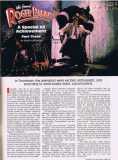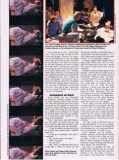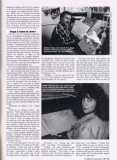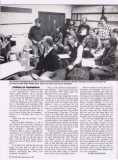Ironically, with all of the modern technical sophistication which has been brought to bear on it, Who Framed Roger Rabbit is a period picture set in the Los Angeles of 40 years ago. According to director of animation Richard Williams, every attempt was made by director Robert Zemeckis and executive producer Steven Spielberg to keep the 1947 period consistent for both the live action and the animation. Keeping the drawing style in period was a constant problem for Williams. Instead of designing the characters from scratch, he tried as much as possible to rely on taking bits and pieces from old model sheets. "Cartoonists don't draw the same way today," Williams explains. "They use different formulas for drawing. No matter how clever you are, it's going to look like 1980s design. What we had to do was to keep looking at the 1940s designs and start putting things together as composites."
In keeping with the story's period feel, the Warner and Disney characters were drawn as they had been in the '40s. Unfortunately, during the production of Roger Rabbit, certain studio licensing executives took an over-protective stand towards the modeling of the characters in period styling, preferring the characters to be drawn as they appear today. But both Spielberg and Zemeckis were determined to maintain the integrity of their film and instructed their animators to keep the character models strictly in the 1940s.
Animator David Spafford's inspiration for Daffy Duck was the late Warner animator Bob Clampett. Explosively imaginative, Clampett established himself as a top director in the late '30s with his lunatic and often surreal settings for Porky Pig and Daffy Duck. "Clampett was the king of cartoons," states Spafford. "He was ahead of everybody and doing really weird stuff. Tex Avery was more adult with his deadpan faces and wild takes."
"We had tapes of the Warner shorts for reference," explains animator Andreas Dejas. "The Clampett stuff is really quite beautiful — broad and very adventurous. It's very thought out. It's not just pushing timing to the limit. The animation is very fast, but very rich."
"The guy is an unsung hero," Spafford continues. "You never see his cartoons on TV because they're just too crazy; the heart of Roger Rabbit is Bob Clampett."
"We had a lot of fun trying to bring that old feeling," says Dejas. "The style of modern shorts and features has become very subdued and controlled. The adventurousness has been lost."
[…]



